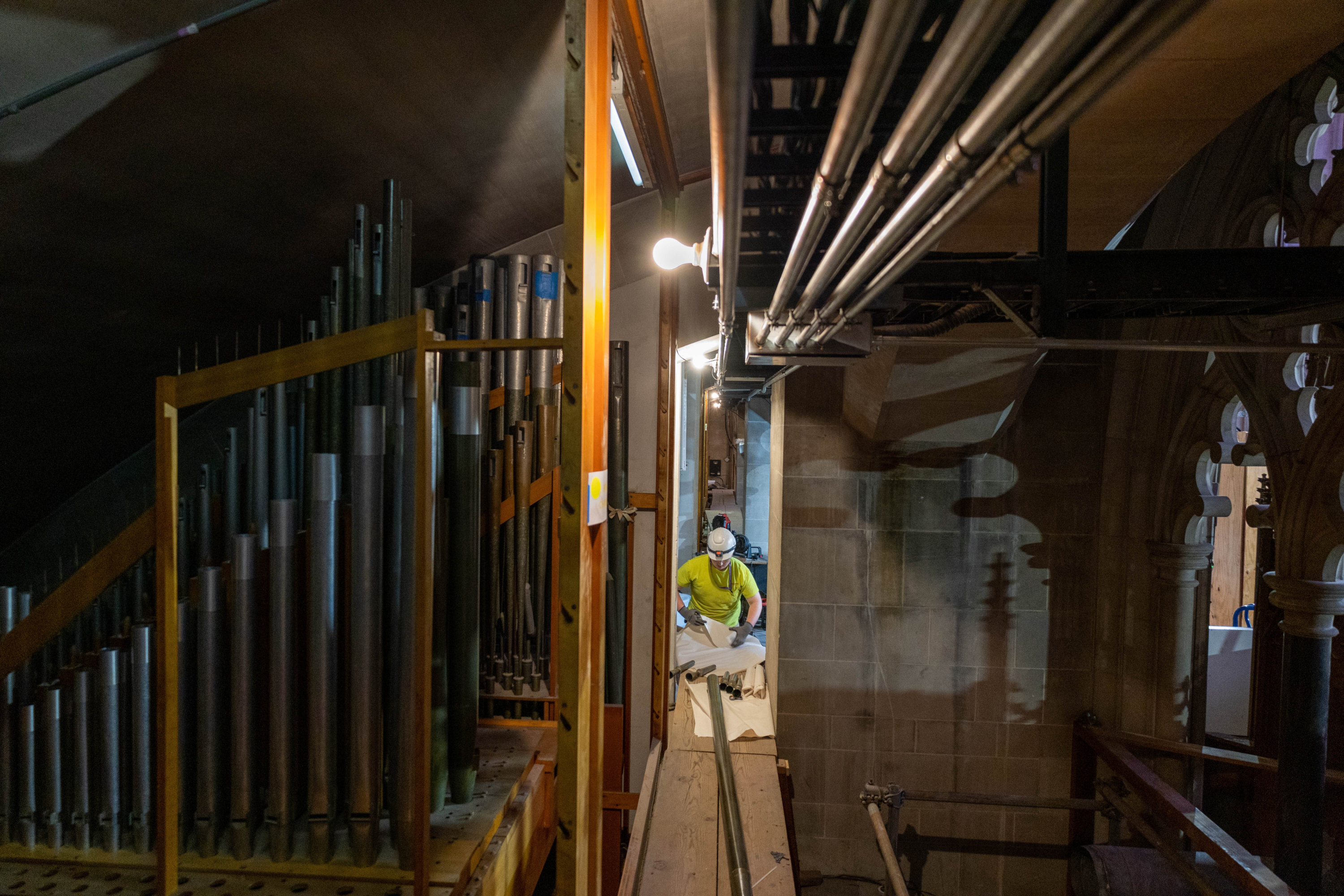A construction team removed over 10,000 pipes from DC’s National Cathedral yesterday, but it wasn’t an overhaul of the building’s plumbing system. It was the 86 year-old pipe organ that has served as a centerpiece for the Cathedral’s Great Choir. A $14.5 million project to restore the aged instrument is underway.

The original organ was installed in the early days of the National Cathedral’s construction in 1938. It has been there for multiple presidential funerals, appearances from guests like the Rev. Dr. Martin Luther King, Jr, and even a celebration for the Nats’ 2019 World Series win. But the wear-and-tear of near-everyday use has left it in sorry shape.

After closing out the holiday season one last time, the organ was decommissioned in January, marking the beginning of the five-year, multi-million dollar project. Scaffolding went up over the High Altar, and the nave temporarily became an active construction zone as teams prepared the massive, complicated structure for removal. In the instrument’s absence, the Cathedral’s sitting organist and Associate Director of Music Tom Sheehan is playing a pipe-less digital organ, which uses 70 speakers to mimic the original’s distinct, reverberating sound.

Early yesterday morning, the team removed the organ’s windchests and pipes–the largest piece is almost 500 pounds—and prepared to ship the deconstructed instrument to the Connecticut-based Foley-Baker company. While retaining as much of the original’s history as possible, the refurbished piece will be louder and will allow for better sound flow throughout the space. Look for it to return to the Cathedral in 2029.











